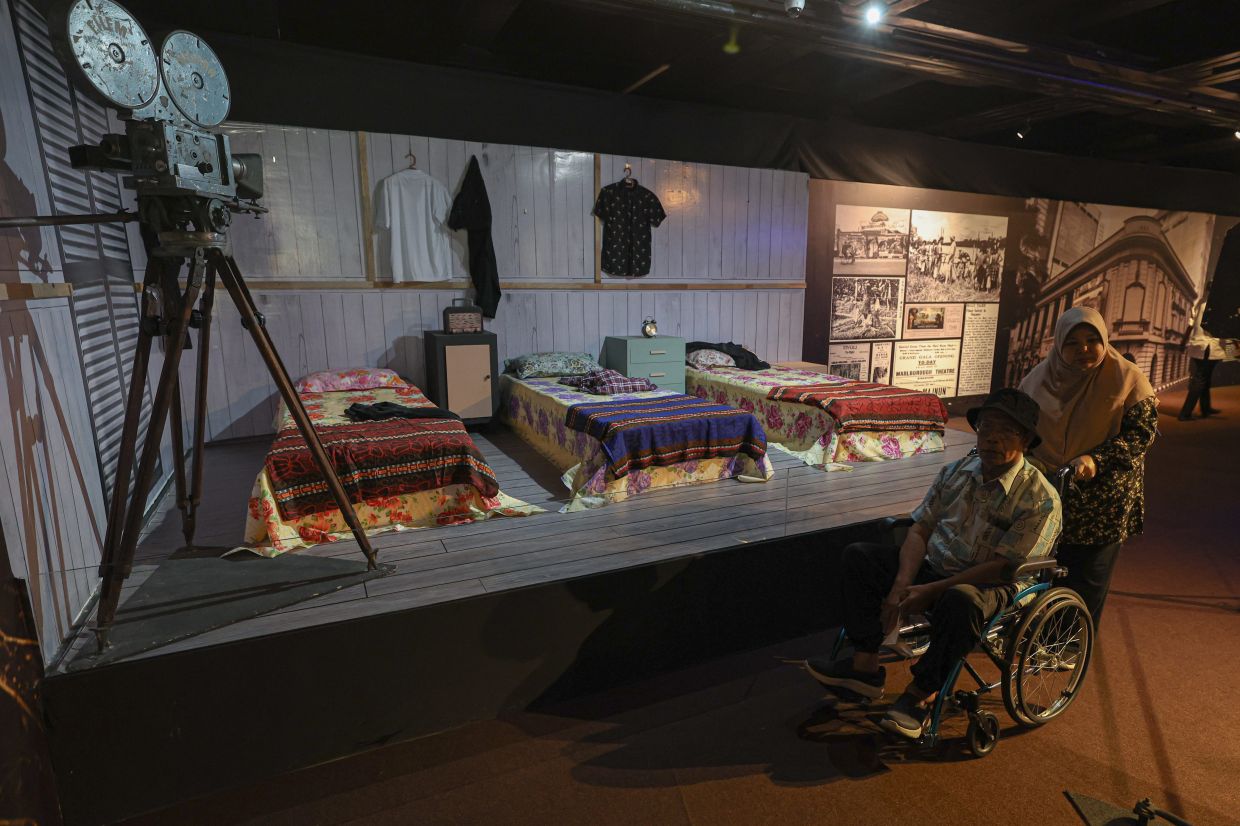Tan Sri P. Ramlee's Golden Harvest Award trophy picked up at the 10th Asian Film Festival in Tokyo in 1963 for the film 'Ibu Mertua Ku' is one of the highlights at the '100 Years Of Malaysian Cinema' exhibition at Muzium Negara in Kuala Lumpur. Photo: Bernama
One of Tan Sri P. Ramlee’s career highlights was when he was awarded the Golden Harvest Award: The Most Versatile Talent at the 10th Asian Film Festival in Tokyo in 1963 for the film Ibu Mertua Ku (My Mother-In-Law).
Sixty years later, that prized trophy the legendary Malaysian actor took home from Tokyo is now a beacon of inspiration - for young filmmakers, actors and movie fans - at the exhibition 100 Years Of Malaysian Cinema at Muzium Negara in Kuala Lumpur.
The exhibition, which runs until July 20, revisits the early years of the country’s cinema history. It is organised by the Ministry of National Unity through the Department of Museums Malaysia (JMM).
More than 100 exhibits related to local cinema history are on display, including a director's chair belonging to P. Ramlee, film production equipment from the 1940s, movie posters from the 1980s to 1990s, a cabinet of vintage film costumes as well as items from the personal collection of the late Datuk Aziz Sattar, the late Datuk Jamil Sulong and actress Datuk Rosnani Jamil.
"This exhibition introduces the history of films in Malaysia from various aspects, including the introduction of film cameras in Malaya in the early 1920s, the publication of the first silent feature film to the development of the exhibition and publishing industry,” said Juhazniza Musa, JMM Exhibition and Development Division curator, in a Bernama interview.
"It also touches on the use of film technology, figures or individuals involved such as directors, producers, artistes from various races, blockbuster films including those that are considered evergreen and loved by audiences through the ages," she added.
JMM also loaned exhibit items from the collection of various agencies, including the National Archives of Malaysia, the National Film Development Corporation (Finas), the World Cultural Organisation, SIAR (local streaming services of local films), and private collectors.
At a recent 100 Years Of Malaysian Cinema exhibition event at Muzium Negara, Datuk Rosnani Jamil, 87, a pioneer actor and director, said she hopes that such exhibitions can be improved in the future by also focusing on all film legacies.
"I saw that none of the pictures or items belonging to actors from the 1940s-era such as Kasmah Booty, Datuk S. Roomai Noor and Siput Sarawak were on display.
"They were among the first batch of artistes involved in the country’s film industry,” said Rosnani, or more affectionately known as Mak Nani.
"This is history. This exhibition is good, but there is still room for improvement,” she pointed out.












